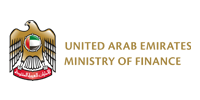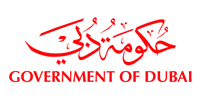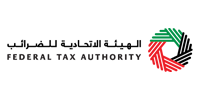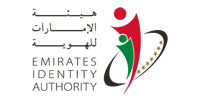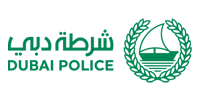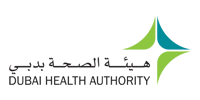Let's Talk
Free Consultation
With advances in medical science, life expectancy has increased. The United Arab Emirates is no exception to this norm, and what that means is that there is also an ageing population whose healthcare needs must be attended to. With Dubai being the most populated city in the United Arab Emirates, the healthcare sector in Dubai is of prime importance. It is also essential to the 3.33 million residents who call Dubai their home, as a healthy workforce is vital to the $102.67 billion economy
For anyone thinking about healthcare company setup in Dubai, the following article promises to shed more insights on the healthcare industry in the emirate.
There are about 38 hospitals in Dubai, out of which six are operated by the Government. Of the 32 private hospitals, 20 of them are accredited by the Joint Commission International. There is approximately one bed for every 532 of the population. The number of outpatients more than doubled from 5.40 million in 2009 to 11.65 million by 2019. While the number of inpatients was 172,408 in 2009, it had risen to 320,220 by 2009. All these point to an increase in the number of those seeking medical services.
*The disparity between the population and the number of patients is explained by a resident of Dubai seeking outpatient/inpatient services more than once during the same year.
Also Read
It is interesting to note that of the 5.40 million outpatient services rendered in 2009, 3.55 million happened in the private sector. In 2019, 9.17 million of the total 11.65 inpatient services were rendered by the private sector. In other words, the share of the private sector in healthcare jumped from 65% to 78%, indicating an increased preference for healthcare institutions in the private sector.
87,655 of the 172,408 inpatient admissions in 2009 also happened in the private sector. This represents about half of all inpatient admissions during the year in Dubai. By 2019, the percentage had jumped to 79%. In 2019, about 60% of all emergency visits were to private hospitals and medical centres or clinics.
The number of males seeking medical services in 2019 is approximately equal to the number of females. The number of Emirati patients is about 33% or less, with expatriates making up the rest. This has deep implications – it stresses the need for healthcare personnel who can speak in Arabic to communicate with patients. For Psychiatry, patients preferred one Government healthcare institution in particular, presumably due to the ability to communicate effectively in Arabic.
Also Read
Trauma care is the most sought after in Government healthcare institutions, while for private healthcare institutions, it is Obstetrics and Gynaecology. The percentage of those seeking alternative medicine increased by 17% in 2019 compared to the previous year, while Physiotherapy and Rehabilitation recorded an annual growth of 77.8% for the same year.
A notable trend is that the number of skin care patients increased by 38.8%, or about 98,686 in all, from 254,143 in 2018. Of the total 352,829 skin care patients in 2019, the most common treatment was permanent hair removal, which made up 27.8%. There are about 19 officially classified skin care treatments in the United Arab Emirates. Botox treatments made up 11.6% and filler treatments 18.2% in 2019. So there is a lot of demand for specialized skin care procedures.
Surgeries carried out by specialty in descending order during 2019 are as follows
- General Surgery
- Obstetrics and Gynecology
- Trauma and Orthopedic Surgery
- Ophthalmology,
- Plastic surgery
- ENT
- Urology
- Pediatric Surgery
- Cardiothoracic Surgery
- Endoscopy
- Gastroenterology
- Oral & Maxillofacial Surgery
- Neurosurgery
- Vascular and Thoracic Surgery
- Oncology
- Pulmonology
Healthcare workers from India and the Philippines currently make up the majority of the workforce. 50% of nurses are from India, while it is 39% for the Philippines. When it comes to doctors, 30% are from India. Indians also make up for 32% of all dentists and 49% of allied healthcare workers such as pharmacists and radiologists. 51% of licensed alternative medicine specialists come from India, and India’s share of the total healthcare workforce is 45%. The Philippines contributes another 23% to the healthcare workforce in Dubai.
The average age of the healthcare worker in Dubai is 37 years, with 62% of the workforce consisting of females.
Future Projections
Also Read
The shortfall is currently 41 beds for acute inpatient care, or in other words, patients who are likely to be discharged on the same day, as of 2020. However, the shortfall will increase to a massive 1575 beds by 2030. For acute inpatient care, the major medical specialties that are expected to be the most in demand by 2030 are Dialysis, Paediatric Medicine, Gastroenterology, Orthopaedics & Rheumatology and General Medicine.
There are currently some 5160 outpatient consultation rooms across Dubai. This includes consultation rooms in hospitals, clinics, and medical centres. The gap between projected demand and supply will be a shortfall of 447 outpatient consulting rooms by 2025, which will widen further to 2106 outpatient consulting rooms in 2030. It is interesting to note that while there is currently an oversupply of outpatient consulting rooms in paediatric care at clinics, there is an increasing shortage of the same at hospitals. The same holds true for adult care as well.
The number of emergency beds presently meets the healthcare demands of Dubai. However, there is expected to be a shortfall of 35 emergency beds by 2025 and 107 emergency beds by 2030. This means that the existing capacity needs to be ramped up at a rate higher than the existing one to overcome any possible shortfalls in emergency care.
When it comes to critical care beds, there are no shortfalls projected except in the case of Neonatal ICU beds. It is projected that there will be a shortfall of 116 NICU beds by 2025. This gap will increase further to 233 NICU beds by 2030, so planning is key to ensuring that this does not occur. There is currently a shortage of non-acute care beds, and the shortfall is projected to be in the region of 675 non-acute care beds by 2030.
There will be a massive shortfall of 8429 licensed doctors in Dubai by 2030. This is expected to hit 4116 in 2025 and as it currently stands, there is a shortage of 757 medical doctors in Dubai. When it comes to nurses, it is estimated that there will be a shortage of 13,923 nurses to meet the healthcare needs of Dubai in 2030. There is currently a shortage of 2491 nurses, and this shortage is expected to hit 9069 in 2025.
Dr. Nahed Monsef, the Director of Strategy and Governance at Dubai Health Authority, believes that the adoption of innovative smart technologies will improve patient care as well as preventive care. The population of Dubai could reach 4.04 million in 2030 at the lowest projected growth rate, or it could be as high as 5.60 million residents by then.
A&A Associate LLC is a business advisory firm that specializes in offshore business setup in Dubai. It has been of assistance to clients from 100 countries around the world and has a 98% client satisfaction rate so far. It can be counted on for market feasibility studies as well as all matters pertaining to company registration and licensing.

















